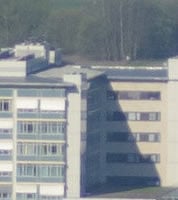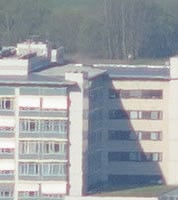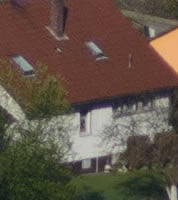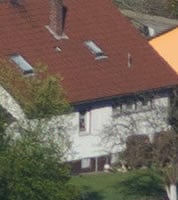Nikon 85mm lens group test
-
-
Written by Thomas
Quality
Comparison of sharpness / contrast
The MTF-charts of these four 85mm lenses is shown below:
Nikkor AF 85mm f/1.8D MTF | Nikkor AF-S 85mm f/1.8G MTF | |
 |  | |
Nikkor AF-S 85mm f/1.4G MTF | Sigma AF 85mm f/1.4 DG HSM MTF | |
 | 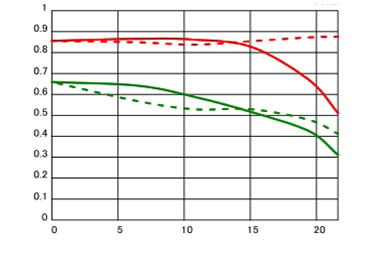 | |
These charts show the lens-performance at the largest aperture, in this case for f1.8 resp. f1.4. Higher values represent larger contrast at fine (red) or very fine (pertrol/green) structures, a value of 1 represents the perfect reproduction of blacks (0,0,0) and whites (1,1,1). The closer the dotted and the continuous lines of each color are together the less astigmatism (resolution depending on the orientation of the test-pattern) the lens has. The x-axis displays the distance from the optical axis (=center of the sensor) in mm. In the following Siemens-star test-shots I’ll show you the real-life performance at 4 mm (center), 13 mm (DX-corner), and 20 mm (FX-corner) on a D800.
I’ll present the comparison in three parts: A table for center performance for all four lenses, followed by DX-corner performance, and FX-corner performance on a Nikon D800 based on Siemens-star test targets. As I try to match the crops from the test-shots closely for white-balance and brightness in post-processing you cannot use these tables for comparison of light fall-off. Processing was done in Lightroom 4 from RAW at camera standard settings. Noise-reduction is set to 0, sharpening to 70/0.5/36/10, with no extra tone, color, or saturation adjustment. White-balance was adjusted to a neutral white and I did some exposure compensation to make the brightness match. CA-removal is ON. Focus was achieved in live-view (contrast-based) and it was done separately for the center and the corners if necessary to compensate for field curvature. These are all 100% crops! Let’s start with the comparison of…
Center performance
Nikkor AF 85mm f/1.8D with Nikon D800 100% crop from center | Nikkor AF-S 85mm f/1.8G with Nikon D800 100% crop from center | Nikkor AF-S 85mm f/1.4G with Nikon D800 100% crop from center | Sigma AF 85mm f/1.4 EX with Nikon D800 100% crop from center | |||
| n/a | n/a | 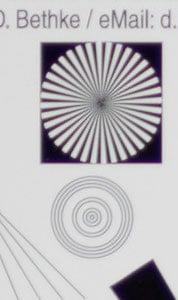 |  | |||
f1.4, 100 ISO | f1.4, 100 ISO | |||||
 |  |  |  | |||
f1.8, 100 ISO | f1.8, 100 ISO | f1.8, 100 ISO | f1.8, 100 ISO | |||
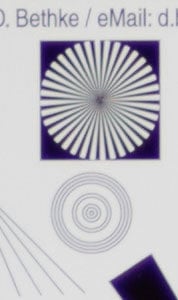 |  |  |  | |||
f2, 100 ISO | f2, 100 ISO | f2, 100 ISO | f2, 100 ISO | |||
 |  |  |  | |||
f2.8, 100 ISO | f2.8, 100 ISO | f2.8, 100 ISO | f2.8, 100 ISO | |||
 | 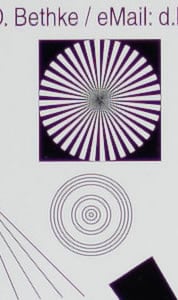 |  |  | |||
f4, 100 ISO | f4, 100 ISO | f4, 100 ISO | f4, 100 ISO | |||
 |  |  |  | |||
f5.6, 100 ISO | f5.6, 100 ISO | f5.6, 100 ISO | f5.6, 100 ISO | |||
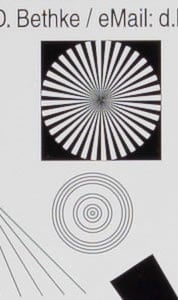 |  |  |  | |||
f8, 100 ISO | f8, 100 ISO | f8, 100 ISO | f8, 100 ISO |
From f1.8 to f2.8 the Nikon 85/1.8D shows its age: it’s less contrasty and clearly behind the newer lenses in sharpness. But from f4.0 it catches up and delivers very good performance. Between the newer Nikon lenses there is very little difference. Both develop some residual CA when stopped down combined with a slight focus shift but that doesn’t stop them from delivering excellent performance from f2.8 onwards. The Sigma 85/1.4 is on a par with the best here, showing perhaps a little less sharpness but has the advantage of less magenta CA when stopped down.
DX-corner performance
Nikkor AF 85mm f/1.8D with Nikon D800 100% crop from DX-corner | Nikkor AF-S 85mm f/1.8G with Nikon D800 100% crop from DX-corner | Nikkor AF-S 85mm f/1.4G with Nikon D800 100% crop from DX-corner | Sigma AF 85mm f/1.4 EX with Nikon D800 100% crop from DX-corner | |||
| n/a | n/a |  |  | |||
f1.4, 100 ISO | f1.4, 100 ISO | |||||
 |  | 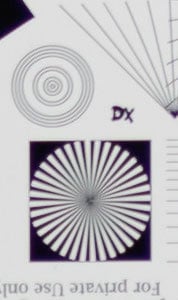 | 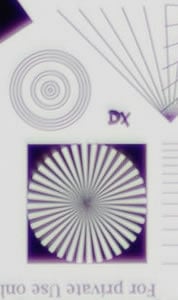 | |||
f1.8, 100 ISO | f1.8, 100 ISO | f1.8, 100 ISO | f1.8, 100 ISO | |||
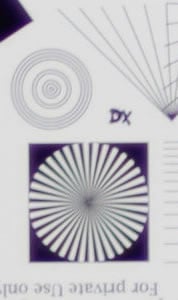 |  |  |  | |||
f2, 100 ISO | f2, 100 ISO | f2, 100 ISO | f2, 100 ISO | |||
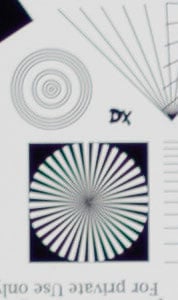 |  |  | 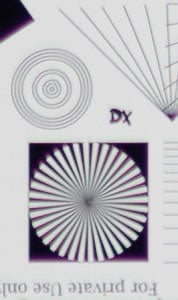 | |||
f2.8, 100 ISO | f2.8, 100 ISO | f2.8, 100 ISO | f2.8, 100 ISO | |||
 | 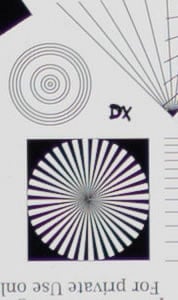 |  | 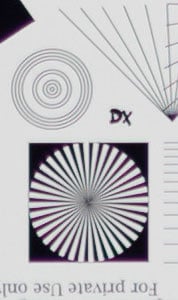 | |||
f4, 100 ISO | f4, 100 ISO | f4, 100 ISO | f4, 100 ISO | |||
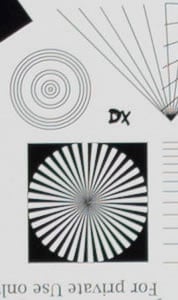 |  | 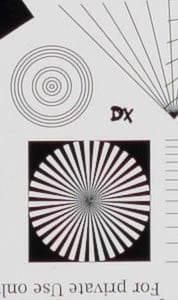 |  | |||
f5.6, 100 ISO | f5.6, 100 ISO | f5.6, 100 ISO | f5.6, 100 ISO | |||
 |  |  |  | |||
f8, 100 ISO | f8, 100 ISO | f8, 100 ISO | f8, 100 ISO |
In the DX corners you can see a clear drop in performance: you need to stop down to f5.6 on the Nikon 85/1.8D resp. f4.0 on the Nikon 85/1.8G and 1.4G to get very good performance. The Sigma starts to show some pretty obvious spherical aberrations although in resolution it’s almost as good as the newer Nikon lenses.
FX-corner performance
Nikkor AF 85mm f/1.8D with Nikon D800 100% crop from FX-corner | Nikkor AF-S 85mm f/1.8G with Nikon D800 100% crop from cFX-corner | Nikkor AF-S 85mm f/1.4G with Nikon D800 100% crop from FX-corner | Sigma AF 85mm f/1.4 EX with Nikon D800 100% crop from FX-corner | |||
| n/a | n/a |  |  | |||
f1.4, 100 ISO | f1.4, 100 ISO | |||||
 |  |  |  | |||
f1.8, 100 ISO | f1.8, 100 ISO | f1.8, 100 ISO | f1.8, 100 ISO | |||
 |  |  | 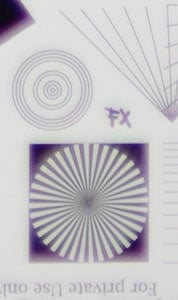 | |||
f2, 100 ISO | f2, 100 ISO | f2, 100 ISO | f2, 100 ISO | |||
 |  |  |  | |||
f2.8, 100 ISO | f2.8, 100 ISO | f2.8, 100 ISO | f2.8, 100 ISO | |||
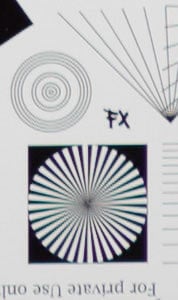 |  |  |  | |||
f4, 100 ISO | f4, 100 ISO | f4, 100 ISO | f4, 100 ISO | |||
 |  |  |  | |||
f5.6, 100 ISO | f5.6, 100 ISO | f5.6, 100 ISO | f5.6, 100 ISO | |||
 |  |  |  | |||
f8, 100 ISO | f8, 100 ISO | f8, 100 ISO | f8, 100 ISO |
Now the Sigma 85/1.4 is the clear outlier of the bunch: It produces the highest resolution in the FX-corner wide open up to f2.0 – but at the cost of low edge-contrast. A bad case of spherical aberations / coma which also fooled the contrast-based AF of the D800: The camera chose a focus where the aberrations were lower and thus the contrast better – but at the price of sharpness. For the table above I corrected this by manually focussing considerably farther away than the AF suggested, plus I had to use different focus-corrections depending on the aperture which is indicative of heavy focus-shift in the FX-corners. The center and the DX-corners are not affected. For more information about the optimal focus in the FX-corners have a look at my Sigma 85mm f1.4 review.
At f5.6 and f8.0 you see the reverse: All Nikkors produce sharper results than the Sigma.
When you compare all four lenses the Nikon 85/1.8G clearly produces the best FX-corner performance overall. At f2.0 sharpness is almost on a par with the Sigma but at a much better edge-contrast. From f2.8 onwards it’s the best performing lens in the FX-corner. The old 85/1.8D performs similar to the 85/1.4G. Both have better contrast than the Sigma but lower sharpness than the Nikon 1.8G. You need to stop them down to f5.6 to get very good results.
Now let’s see how these lab results translate into real-life performance, using an elevated view over a town towards some hills in the distance (dubbed “Unremarkables”). The building in the middle is almost 3 km away.
| Unremarkables: Infinity shot for our 4-way 85mm shootout on a D800 |
| Main image, captured at f5.6, 100 ISO, with the Sigma AF 85/1.4 EX DG HSM |
The following table shows 100% crops of the central building. The Nikkors were all shot at the same day within minutes. The Sigma was shot after the leaves came out so it shows differences in the foliage and the light – it was a clearer day.
The next table shows 100% crops from the lower right corner.
Taking all results in the center, DX-corner, and FX-corner plus my experience from many, many real-life shots into account I come to the following conclusions regarding sharpness and contrast:
The Nikon AF-S 85/1.8G produces the best performance in the most consistent way. It is easy to focus optimally, shows very little magenta ghosting in high contrast situations and has very low spherical aberrations / coma. It also degrades surprisingly little from center to corner and when opening up the aperture. Plus it performs equally well at infinity or at portrait distances. Its only weakness is a slight dip in sharpness somewhere along the borders of the DX image circle.
Its predecessor, the Nikon AF 85/1.8D produces a mixed experience: It is clearly outperformed in any situation in the close-up range of around 3m that my Siemens-star testshots are made. It has to be stopped down at least one stop to come close(r) to the Nikon AF-S 85/1.8G. But long-distance the distinction is not so clear, it even looks better in the FX-corners than its successor esp. at f4.0. It has some play between the focus-ring and the focus-drive in the camera and that proved to be fatal for focus repeatability on a copy I tested some time ago. The copy I tested here had the same play but focus reliability was better.
The larger brother, the Nikon AF-S 85/1.4G, also puts in an impressive performance: on a par with the 85/1.8G in the center, a little better at the DX-corner, but behind in the FX-corner until f5.6. It’s a little more critical to focus in high contrast situations: overshoot your target a little and magenta CAs develop pretty easily. But other than that it is a marvel capable of producing very sharp and contrasty images even wide open.
The competition from Sigma left me with mixed feelings: The underlying potential is great and it can produce the sharpest images in the FX-corner from the bunch. But that comes at the cost of haloing (light seeping into adjacent darker areas) produced by significant spherical aberrations / coma that also reduces the contrast in the DX-corner. And focus has it’s intricacies and is not easy to master perfectly.
But soft and low-contrast rendering of peripheral areas of an image may even be a sought-after characteristic of lenses that many think of primarily as portrait-lenses. And following-on in that vein it’s now time to compare the quality of their defocused image areas, an effect known as bokeh.
Bokeh comparison
Let’s see what kind of bokeh these lenses can produce wide open. Large aperture primes especially of the 85mm variety are sought for isolating a subject from the background. The quality of background-rendering (called bokeh) with such a lens is often valued higher than the resolving power or corner-to-corner sharpness. The hallmark of a very good bokeh is an unobtrusive soft blur with little to no outlining of background-subjects and a quality called “creaminess”. This is important not only for applications like portraiture. In street- and nature-photography it is also quite helpful to minimize the impact of distracting backgrounds to help focus the beholder on the central subject.
The following 50% crops are from the background of an image of tulips which you can access by clicking through the crops below. It demonstrates the rendering of out-of-focus elements.
The first row shows both f1.8 Nikkors and it is obvious that a large aperture is only part of the formula that produces a pleasing bokeh. The Nikon AF 85/1.8D on the left produces a bokeh that is typically called “nervous”. It shows bright lines around subjects and is anything but smooth. The new Nikon AF-S 85/1.8G (middle) is clearly better in that respect but is topped by Nikon’s AF-S 85/1.4G (right) which draws an advantage from its 2/3 of a stop larger aperture.
As the Sigma AF 85mm f/1.4 DG HSM came in later for testing I used a similar setup but with different targets to compare it to the Nikon AF-S 85mm f/1.4G. See the following images.
Nikkor AF-S 85mm f/1.4G on Nikon D800 | Sigma AF 85mm f/1.4 DG HSM on Nikon D800 50% crop from background | |
 |  | |
f1.4, 100 ISO | f1.4, 100 ISO |
The Sigma on the right exhibits a less smooth bokeh than the Nikon. It shows more pronounced outlining of brighter areas and more obvious transitions between different parts of the background.
So all-in-all the most expensive lens of the bunch, the Nikon 85/1.4G, produces the most beautiful bokeh while both the Sigma 85/1.4 and the Nikon 85/1.8G fall a little behind, and the older Nikon 85/1.8D is clearly outperformed by the other three lenses.
Now there you have it: optimal sharpness, beautiful bokeh, and low price form a triangle of goals that you’ll not be able to satisfy with a single lens. So it’s time in this 4-way shootout for my 85mm lens comparison verdict for Nikon (D)SLRs.


